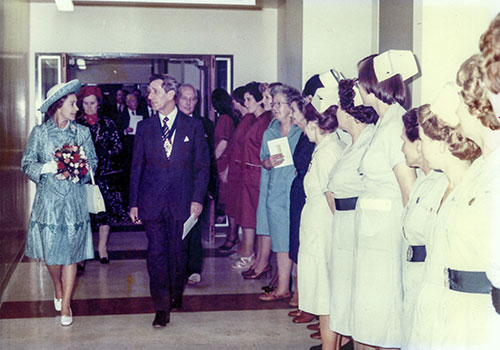
July 24, 2017, by Emma Rayner
University pays tribute to Queen’s Medical Centre on its 40th birthday
Medical educators and researchers at the University of Nottingham are helping to celebrate 40 years of improving healthcare and medical training, on the anniversary of the opening of the Queen’s Medical Centre in Nottingham.
In July 1964, a shortage of doctors in the UK prompted a significant announcement by Minister of Health, Anthony Barber. With healthcare in the Nottingham area the most under-resourced in the country at that time, the Minister announced that a new teaching hospital of around 1200 beds would be built on 42 acres of land next to the University campus.
When the new QMC was officially opened by The Queen on 28 July 1977, it was the biggest purpose-built hospital in Europe with 27 miles of corridors.
It became the new home of the University’s Medical School which had opened in temporary buildings on campus seven years previously. Since then the Faculty of Medicine and Health Sciences has grown in size and status and now supplies around 700 newly qualified doctors, nurses and midwives to the NHS and beyond every year.
Former Chair of the General Medical Council and Faculty Dean, Professor Sir Peter Rubin, said: “The impact of the QMC on the health of not only people in Nottingham but people in the East Midlands has been enormous and far greater than anyone could have possibly realised. It’s hard to imagine it now but the city was the worst place in the country to live as far as health outcomes were concerned. Forty years on, the QMC has driven up standards of health to an amazing degree. It is now an internationally-recognised centre for patient care and research and this is testament to the far-reaching ideals of the people who established the hospital and medical school.”
Among the significant improvements in healthcare pioneered in Nottingham are MRI, trauma and orthopaedics, fertility treatment, early detection and treatment of cancer including children’s brain tumour research, cochlear implants, lung and gastro-intestinal disease, anti-infection medical implants and devices, and tobacco and alcohol control.
Pro-Vice-Chancellor and Dean of the Faculty of Medicine and Health Sciences, Professor John Atherton, said: “Over the past 40 years, the Queen’s Medical Centre has impoved healthcare in the region beyond measure. In fact the collaborative medical research between the university and the hospitals’ trust has had major impact on healthcare globally. We wish the QMC a very happy 40th birthday and look forward to continuing our work together, not least through our new Biomedical Research Centre, a joint venture between Nottingham University Hospitals Trust and the University that has recently secured £23.6 million of funding for new medical research.”
Chief Executive Officer of the Nottingham University Hospitals NHS Trust, Peter Homa, said: “QMC, now part of Nottingham University Hospitals NHS Trust, has strengthened its reputation as one of the country’s leading teaching hospitals over the past decade with year-on-year improvements to safety, patient experience and quality and having some of the country’s finest clinical outcomes.
“More recent achievements include QMC taking on the important responsibility as the East Midlands Major Trauma Centre. Over the last five years the Centre has treated 5,700 patients and saved the lives of 450 patients who wouldn’t otherwise have survived. We greatly value our unique partnership with the University of Nottingham. We look forward to further strengthening our relationship with the University in the years to come. NUH remains the only hospital in the country to be directly connected by a tram, significantly improving access to our hospital for patients, visitors and staff.”
The 40th anniversary of the opening of the hospital building by The Queen took place on Fri 28th July, when the new £1.4 million bridge linking the QMC’s tram stop directly into the hospital was officially unveiled and named the Sir Peter Mansfield Bridge.
The University of Nottingham’s Department of Manuscripts and Special Collections holds the official QMC archive which includes minutes, correspondence, plans and photographs. An overview of the collection is available here and a guide to the collection is available here.
A new online history of the QMC, ‘Nottingham’s Medical Metropolis’, by University of Nottingham alumnus Paul Swift is available here.

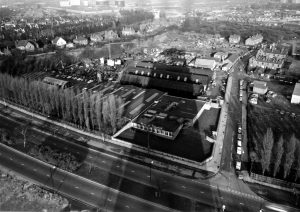
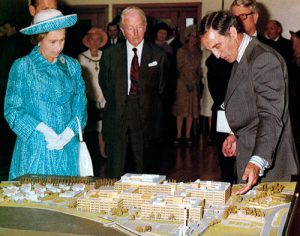
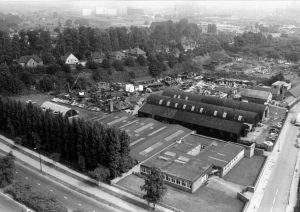
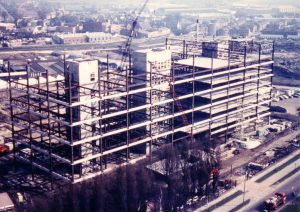
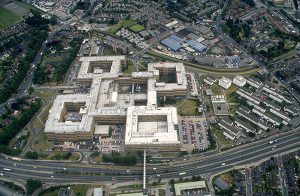
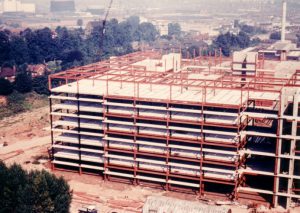
Happy 40th birthday QMC, such a wonderful milestone!
Opening the Medical School was a huge undertaking, and the University had been trying to establish one since 1942. If anyone is interested in the history of the Medical School – or just wants to see more fabulous old photos – then have a look at the University’s archives http://mss-cat.nottingham.ac.uk/DServe/Record.aspx?src=CalmView.Catalog&id=UAF1&pos=1